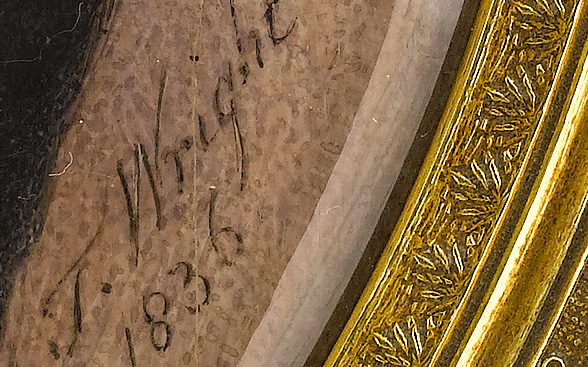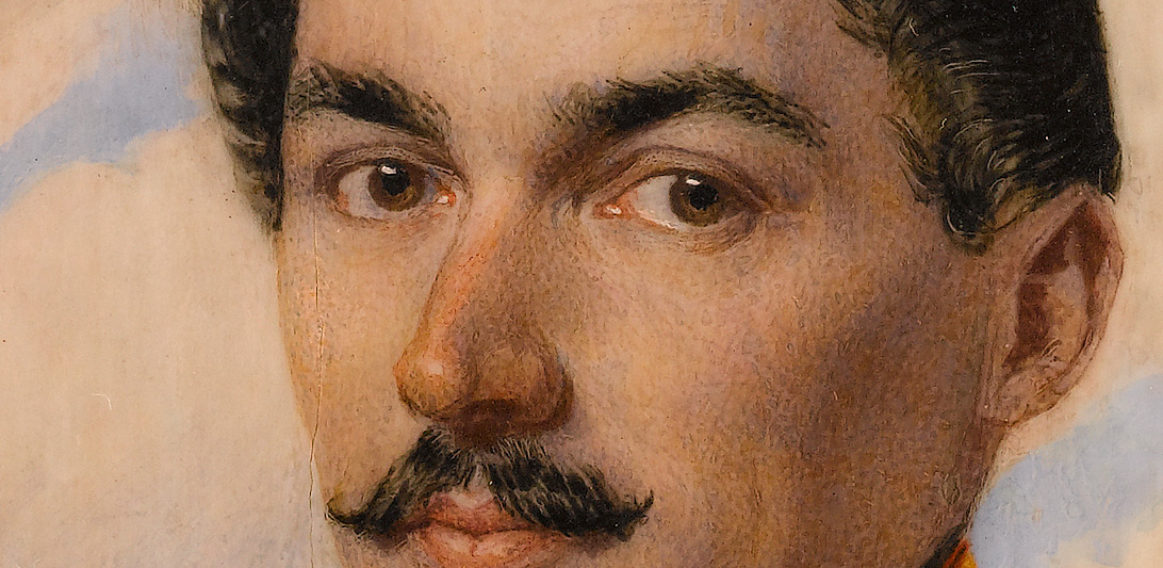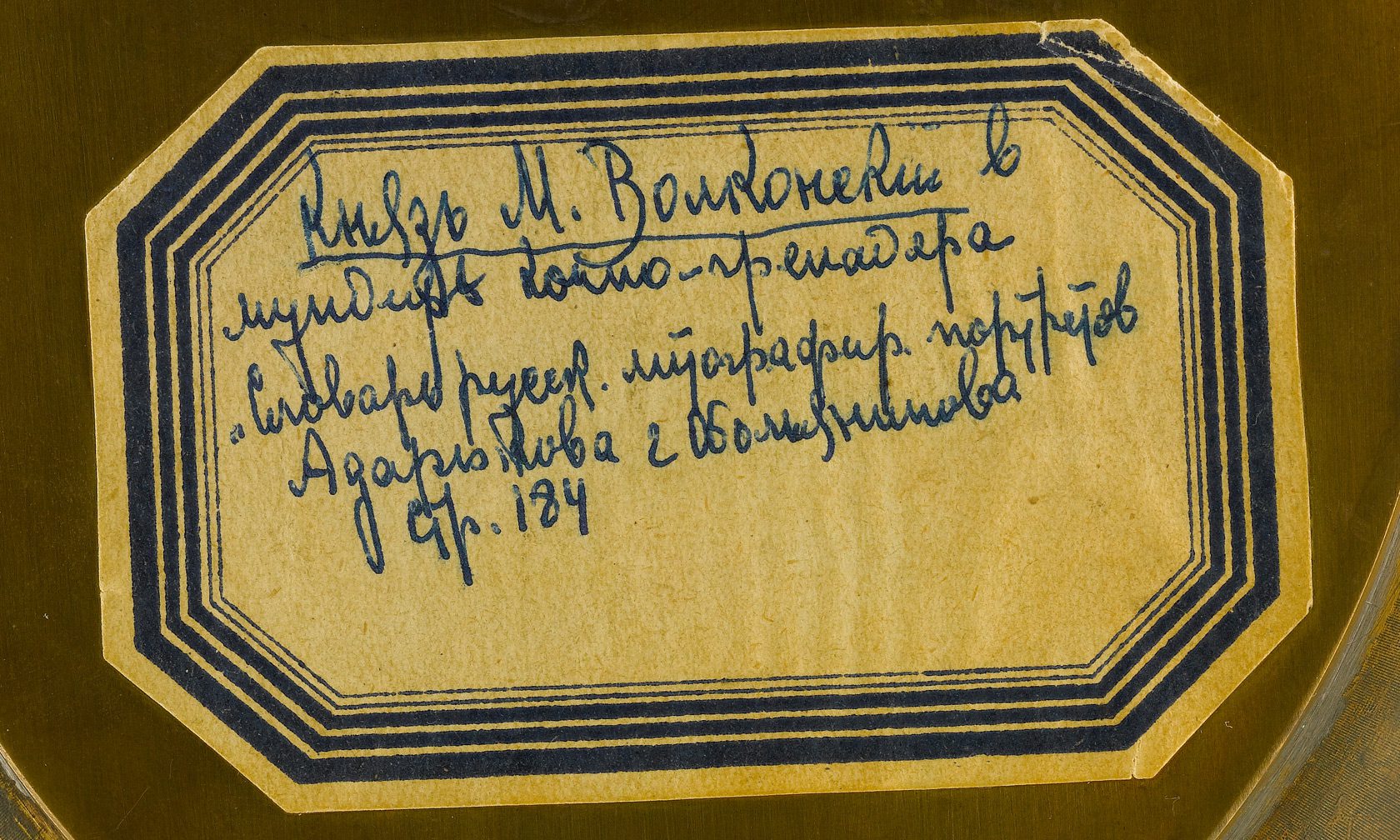This oval miniature depicts Prince Sergei Grigorievich Volkonsky (1788-1865), a Russian Major General of aristocratic descent who is noted for his prominent role in the Decembrist revolt of 1825. Volkonsky is shown wearing a red and black military coat with gold-figured cuffs and collar with red piping, gold epaulettes and buttons. He is painted against a cloud-filled sky. His stance is unusual among miniatures of this period, which traditionally feature highly formal poses: by painting Volkonsky with folded arms, the artist alludes to his subject’s headstrong, subversive character. The gilt frame is richly decorated with a foliate border and laurel motif; a gold loop is affixed to the top-rear of the miniature.
Volkonsky was a grandson of Field Marshal Nicholas Repnin, a leading statesman under Catherine the Great, and as a young man fought in the Napoleonic Wars. In 1825, hoping to achieve liberal reform by forcefully preventing Tsar Nicholas I’s assumption of the throne, he joined some 3,000 soldiers in an attempted coup. Volkonsky was sentenced to beheading in the wake of the failed revolt, later commuted to ‘katorga’: a form of punishment in which the accused was sentenced to forced labour in Siberia. Volkonsky was sent to the mines of Irkutsk, where he spent the next 30 years as a political exile until, in 1856, Alexander II allowed Volkonsky and other old Decembrists to return. Volkonsky’s memoirs were published posthumously, in 1902.
Thomas Wright (1792-1849) was an English painter and engraver. In 1822 he moved to St Petersburg, where he embarked on a series of portraits of Russian generals. Wright left Russia in 1826 but returned four years later. This time, he stayed in the country for fifteen years. Working under court patronage, he produced ‘Les Contemporains Russes’, a series of engraved portraits published in St Petersburg.











